Hoss Helix Hooks Cheat Sheet (Rigging, Lure Pairings, & More!)
- By: Tony Acevedo
- on
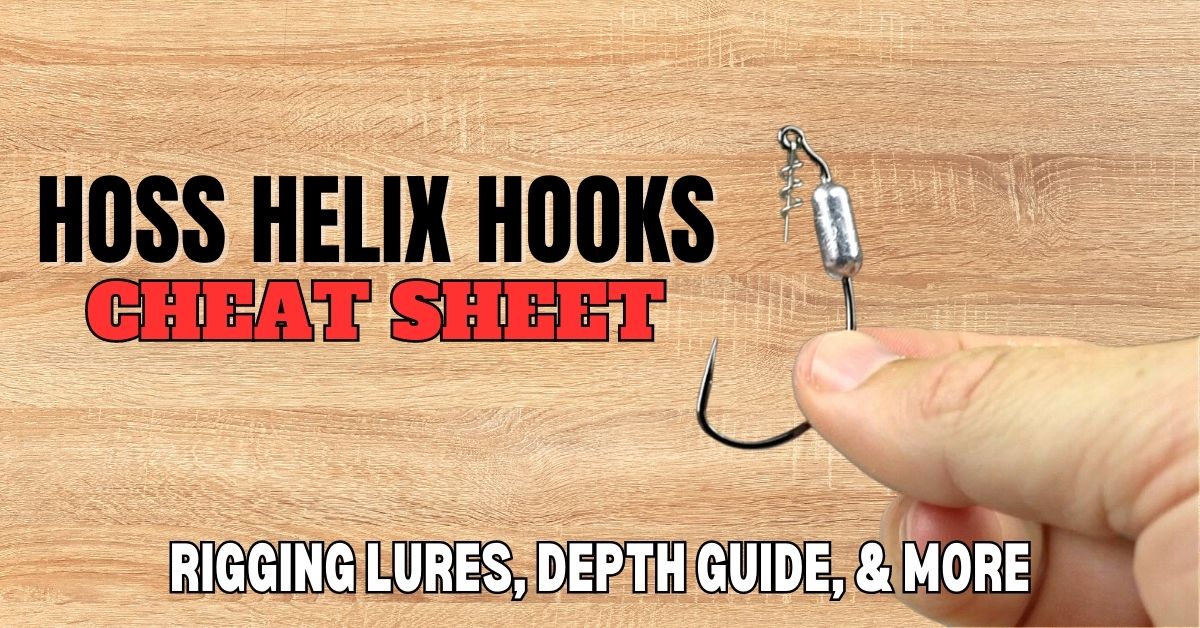
Now introducing the BRAND NEW Hoss Helix Hooks Cheat Sheet!!!
You don’t have to think about lures, weights, depth coverage, or anything else anymore because I’ve got you covered.
Check out the full cheat sheet and download the PDF below!
Hoss Helix Hooks Cheat Sheet [PDF Download]

Additional Cheat Sheets & Resources:
- Download the Lure Selection Cheat Sheet (PDF)
- Lure Selection Cheat Sheet (PDF in Greyscale)
- Insider Members CLICK HERE for Seasonal Cheat Sheets
Overview and Rigging Tips
Hook and Lure Pairing
- 3/0 Hook Size Pairings (3” to 5” Lures)
- Slam Series Paddletails (3.5 inches)
- Slam Series Jerk Shads (5 inches)
- Mulligan Paddletails (4 inches)
- Power Prawn USA Jr. (3.5 inches)
- DOA Cal Shad
- 5” Gulp! Jerk Shad
- 3” to 4” Gulp! Shrimp
- 3” Z-Man MinnowZ
- 4” Z-Man DieZel MinnowZ
- 4” Z-Man Scented PaddlerZ
- 4” Z-Man Scented Jerk ShadZ
- 3” Z-Man Ez ShrimpZ
- 4/0 Hook (4” to 5” Lures)
- Slam Series Bomber Paddletails (5 inches)
- Slam Series Jerk Shads (5 Inches)
- Power Prawn USA Original (4.3 Inches)
- Mulligan Paddletails (4 inches)
- 5” Gulp! Jerk Shad
- 4” Gulp! Shrimp
- 4” Z-Man DieZel MinnowZ
- 4” Z-Man Scented PaddlerZ
- 5” Z-Man Scented PaddlerZ
- 5” Z-Man Scented Jerk ShadZ
Depth Coverage Ranges
When fishing the shallows, every 6 inches of depth coverage can be crucial to maximizing your results. Here’s a quick listing of the depth ranges that each of these weights will most effectively cover:
- 1/16th oz = 0.5 to 1.5 ft
- 1/8th oz = 1.0 to 2.5 ft
- 3/16th oz = 1.5 to 3.0 ft
Note: Please note that the lures like paddle tails with water drag will ride slightly higher in the water column compared to streamlined lures like Power Prawns & Jerk Shads. The depth ranges above show a general average.
Ideal Structure/Applications
Due to the ability to rig your soft plastics weedless with this hook, it can be a very universal hook to use around grass, oysters, docks, mangroves, and any other type of shallow structure that a bare hook, such as a jighead, may get caught on. These hooks also are ideal for skipping lures up under cover and structure.
Ideal Hook-to-Line Connection Knot
The Non-Slip Loop Knot is ideal to give the lure more freedom of movement and action due to the hook not being snug to the line. See Image Below
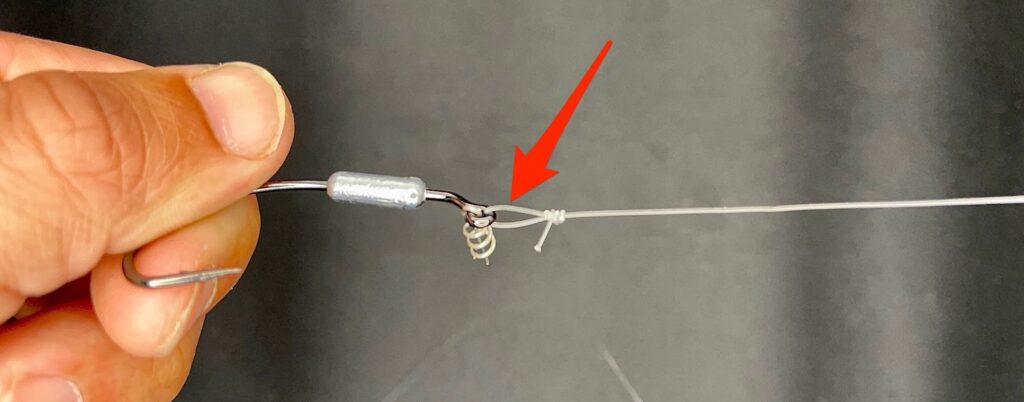
Rigging Tips
- You will notice that there is a centering pin on the spring attached to the hook. Make sure this pin is as centered as possible on the front of the lure:
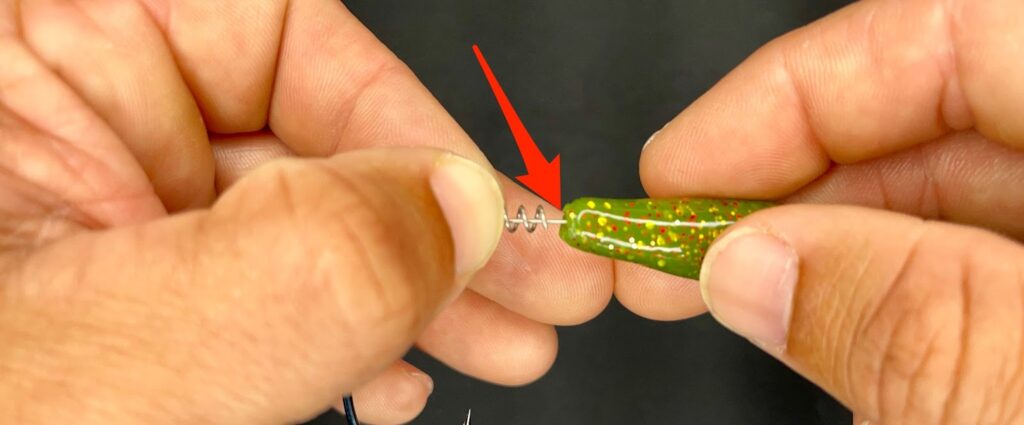
- Once centered, push the lure into the centering pin and begin twisting the lure in a clockwise direction while pushing the lure into the spring until the entire spring is inside of the lure (make sure the bottom of the lure is facing the barb of the hook):
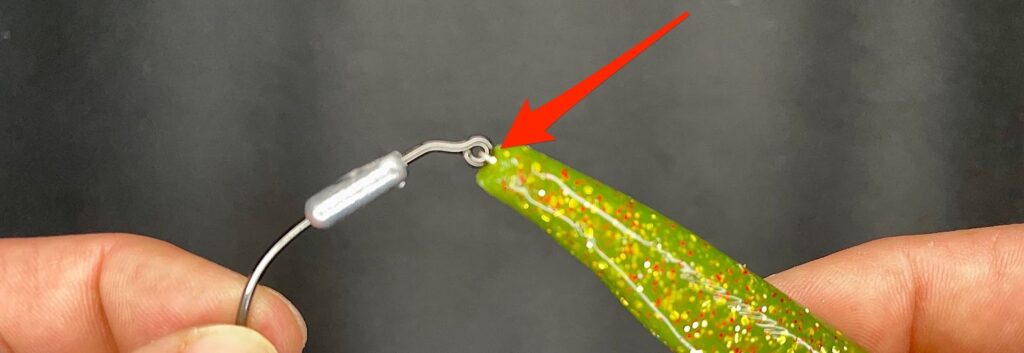
- Now you will want to find where to insert the barb of the hook. Place the hook along the side of the lure and place your thumb where the turn of the hook is. Keep this spot marked as that is the distance to where you want to push the point of the hook through:
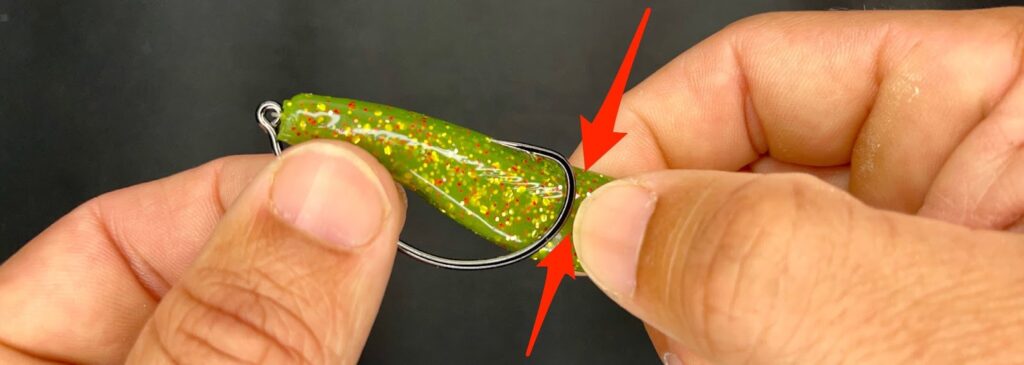
- Push the hook through the bottom of the body and out through the top, making sure the hook is as centered as possible on the body of the lure (Arrow 1). If not, this will cause your lure to spin. Once centered, you can then “skin hook” the point of the hook into the body of the lure to make it weedless (Arrow 2). You do not want to bury the entire hook into the body of the lure as this will result in missed hooksets (and destroyed lures).
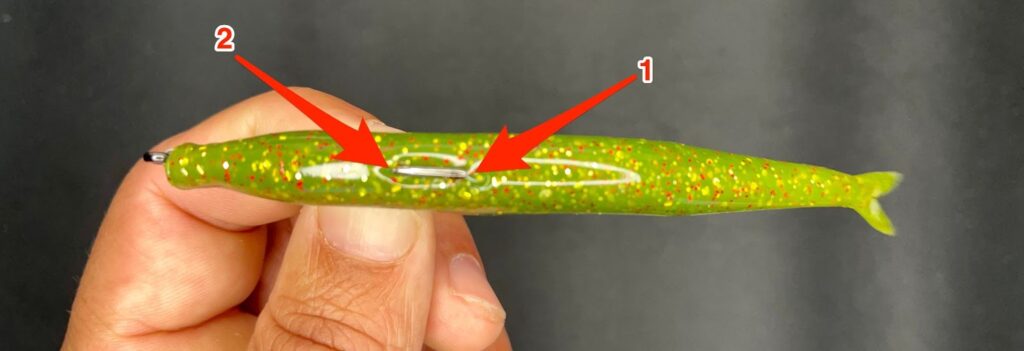
- Once rigged, take a quick glance to make sure your lure is as streamlined as possible – No curves or kinks. Nice and straight! A curved lure will spin and twist up your line, resulting in unwanted wind knots and poor action.
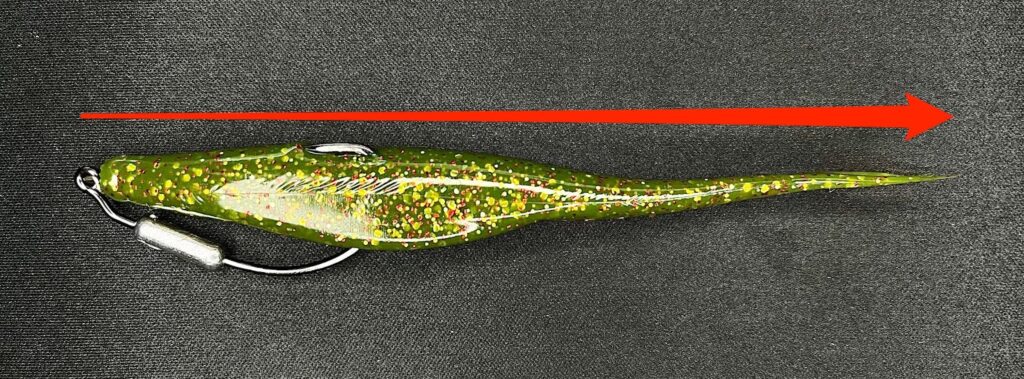
This same rigging process applies to any soft plastic lure (See examples below)
3.5” Slam Series Paddletails

4” Mulligan Paddletails
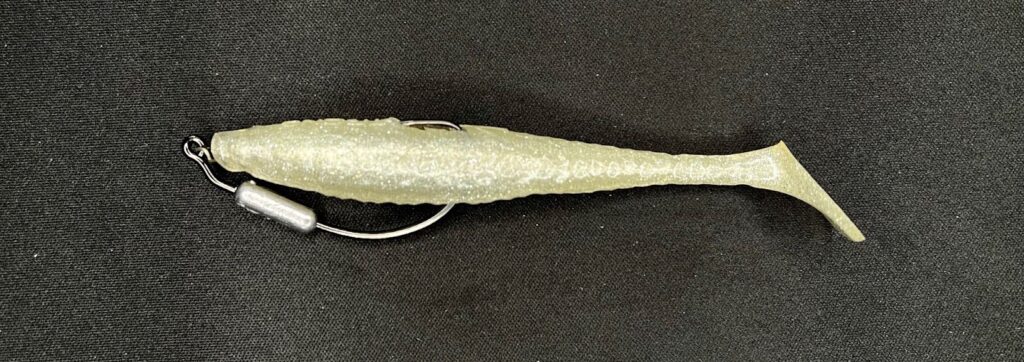
Power Prawn USA Jr.

Bomber Paddletails

Common Rigging Mistakes
Make sure your line is only going through the eye of the hook, and not the spring as well. This is a common mistake if you are not careful. Be sure the line goes through the eye only:
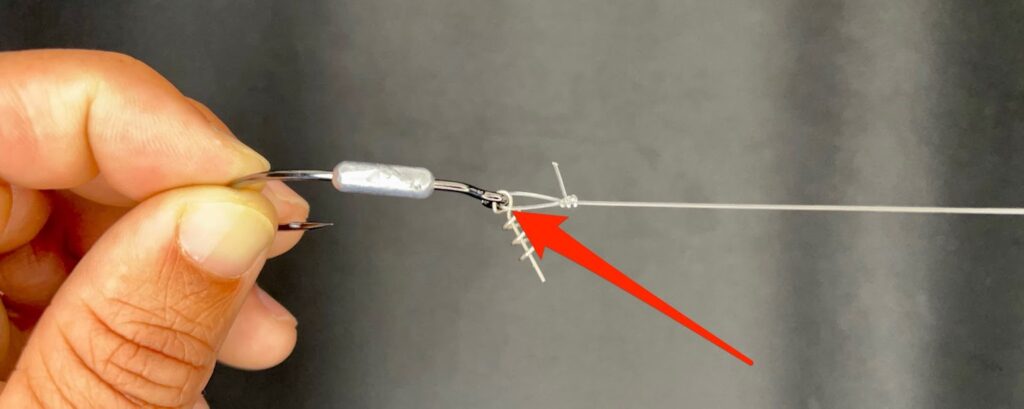
As mentioned before, make sure your lure is rigged straight and streamlined. Any curve of the lure will hinder the action:

Make sure the centering pin is as centered as possible on the front of the lure before twisting it on. Also, keep the lure straight when twisting it onto the hook. If you fail to do so, the end result will be the spring being too far to one side of the lure. This could result in your lure coming off if a fish strikes due to it not being fully secure.

Weight Positioning Tip
The weight on your Hoss Helix Hook will sometimes begin to slide around after a lot of use. This is due to the lead weight becoming loose on the shaft. A simple squeeze of the weight with a pair of pliers will secure it back in place.

**This can actually be helpful in that the weight slides on the shaft of the hook. You can alter how fast the lure sinks by securing the weight in different positions on the shank of the hook. If you move the weight closer to the eye of the hook, this will cause the lure to fall faster in the headfirst direction. If you move the weight closer to the bend of the hook, the lure will fall slower in a more flat/horizontal position.
Z-Man Soft Plastic Lure Rigging Hack
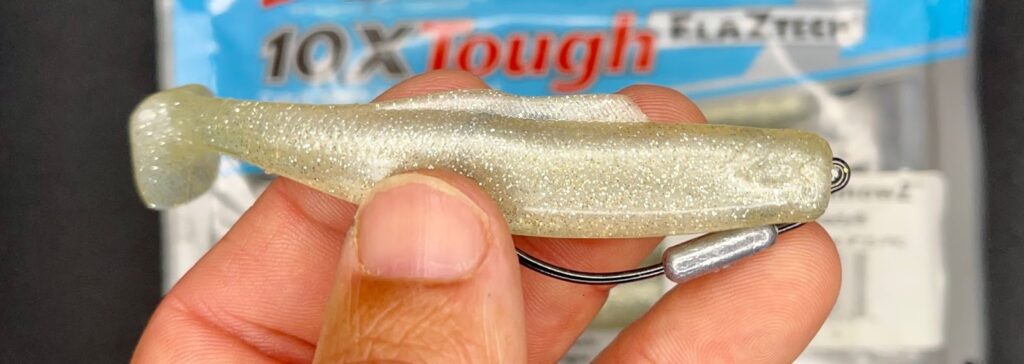
- If rigging Zman Soft Plastic Lures, you will notice it can be quite difficult to get the spring started on them due to how stretchy the material is. A quick tip for rigging Zman baits is to create a pilot hole through the head of the lure (where you would insert the spring). You can do this by using the point of the hook and pushing it down into the front of the bait, creating a pilot hole for the centering spring:
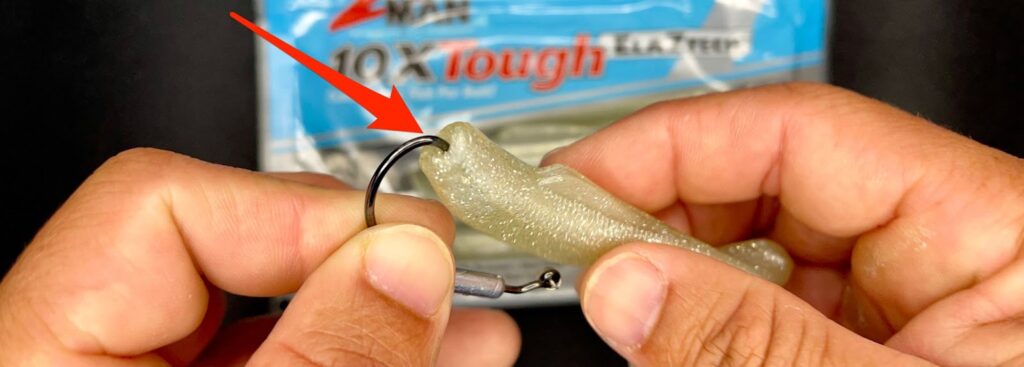
- Now insert the centering spring into the pilot hole that you created and push the nose of the lure as far up over the spring as possible. Squeeze the plastic onto the spring while twisting the hook.
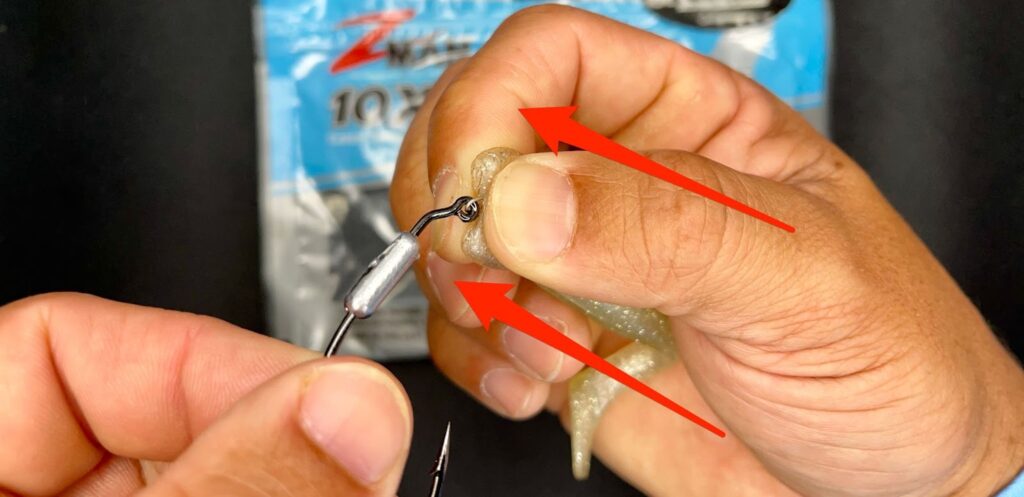

Finding The Fish Help
In order to help make sure that you are targeting the right areas based on the latest feeding trends and upcoming weather forecasts, make sure to use the following 3 resources because they will save you a ton of time.
1. Weekend Game Plans (updated weekly)
These regional game plans will show you exactly what types of spots to target in under 10 minutes… just click the video to start, and you’ll be informed on what to do on your next trip.
2. Smart Fishing Spots Platform (updated every 15 minutes)
This exclusive software literally shows you where the most fish are likely to be feeding based on exactly when you’ll be fishing. It factors in the tides, wind, and weather to help you quickly see which areas to target throughout the day.
3. Community Reports (live feed)
The Insider Community platform is what you can use to see what is biting near you, and you can get to know other members who fish in your area. Plus, you can use it to keep a log of your catches so you can use past trips to help predict future catches.
Related categories:
STOP WASTING TIME ON THE WATER!
Do what the “SMART ANGLERS” are doing and join the Insider Club.
Here’s what you’ll receive today when you join:
- Weekly fishing reports and TRENDS revealing exactly where you should fish every trip
- Weekly “spot dissection” videos that walk you through all the best spots in your area
- Exclusive fishing tips from the PROS you can’t find anywhere else
- Everything you need to start catching fish more consistently (regardless if you fish out of a boat, kayak, or land).
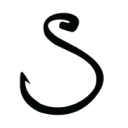
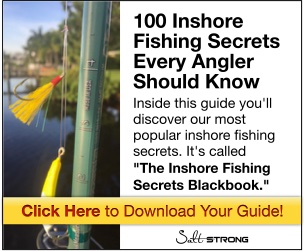

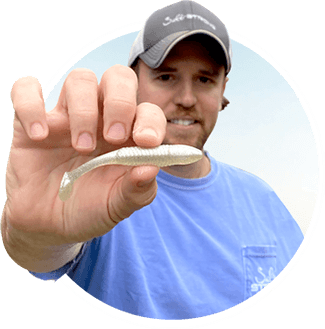
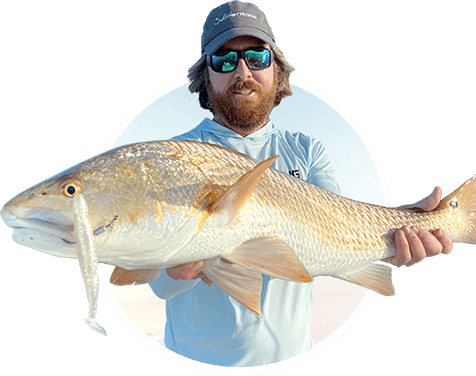
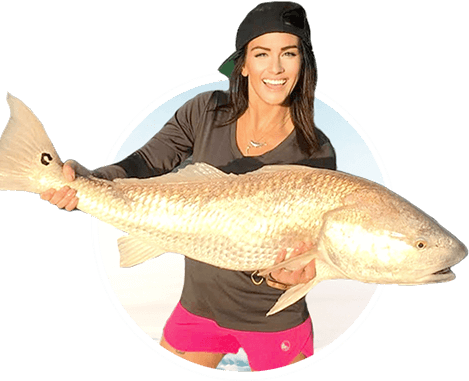
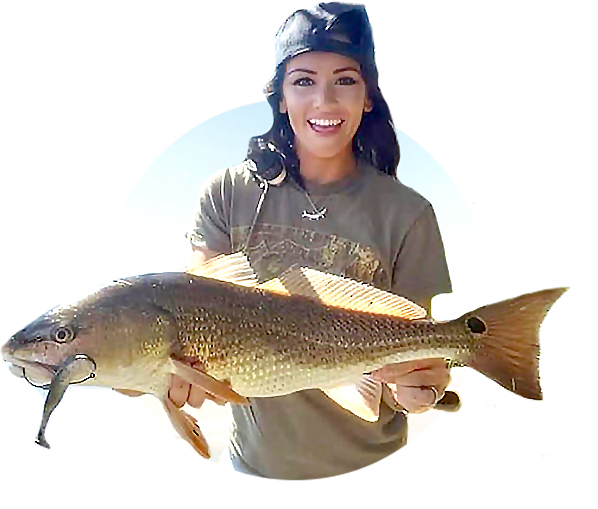
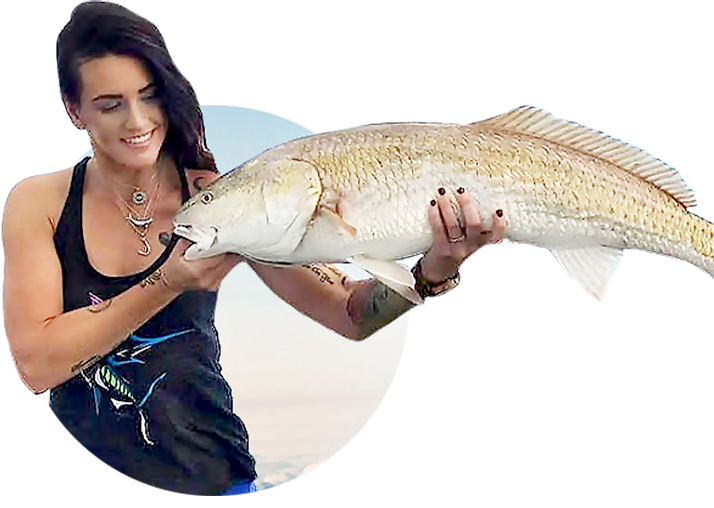
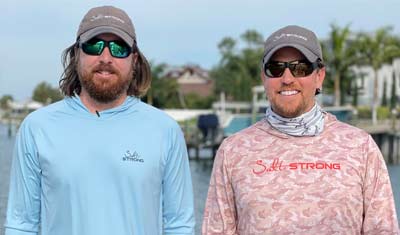
What should the action be like when retrieving a paddle tail on a hoss helix hook. When using a light jig, there’s not much action on the tail, unless I reel it in fast. Also, when I stop reeling, the lure sinks slowly. Whenever I use the hoss helix with a slam shady, it appears the lure is always near the surface, Most of the fish I catch are caught soon after the lure hits the water. I very rarely catch a fish with the hoss helix hook as it is retrieved. With the 1/4 ounce trout eye jig, I tend to catch more fish on the retrieval when I stop reeling. When I stop reeling, the tail flutters as the lure drops. What am I doing wrong? Using the hoss helix hook, is it ok that the lure is near the top of the water with little tail action? Am I fishing too deep of water.
Hey Kevin!
Jigheads will fall faster than the hoss helix hooks, even if they are the same weight. Since the weight on a jig head is at the nose of the bait it causes the lure to be more streamlined on the descent. With Hoss Helix hooks the weight is further back near the belly of the bait which cause it to fall with more of a glide.
Check out this article here:
https://www.saltstrong.com/articles/best-way-to-rig-paddletail/
Thanks Tony!
Thanks! Great video! Extremely helpful.
You’re welcome Frank!
Very helpful. Thanks so much. These things work great in New Jersey for stripers, weakfish, fluke, etc, they aren’t just a Florida bait. Fantastic!!!
You’re welcome Dan!
Thanks Tony! Great piece of work!
You’re welcome Bill and thank you as well!
Fantastic job as always
Thank you Andre!
Great job as always,Tony. Very much needed for those of us that don’t get out to fish as often as we would like… do you think the wind will ever stop blowing at 20 Kts..??
Thanks Vincent! Haha we can only hope! Looks like Friday/Saturday of this week looks a little calmer. Fingers crossed!
Thank you for this great tool! So often you don’t what to pair all the plastics and hooks with, so this is great!
You’re welcome and thank you for the great feedback!
Thanks for doing this Tony.
You’re welcome Jason!
Thank you Tony.
You’re welcome David!
Great tips!
Thanks Scott!